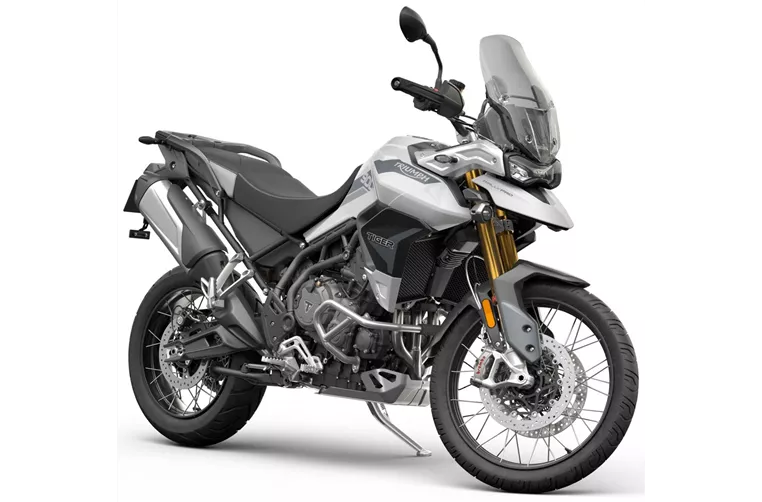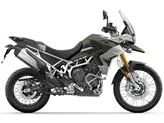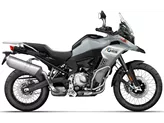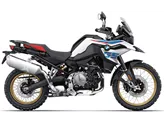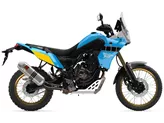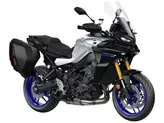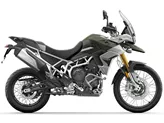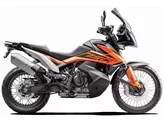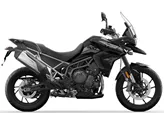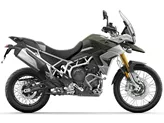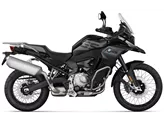Triumph Tiger 800 XC 2014 vs. Triumph Tiger 900 Rally Pro 2020

Triumph Tiger 800 XC 2014
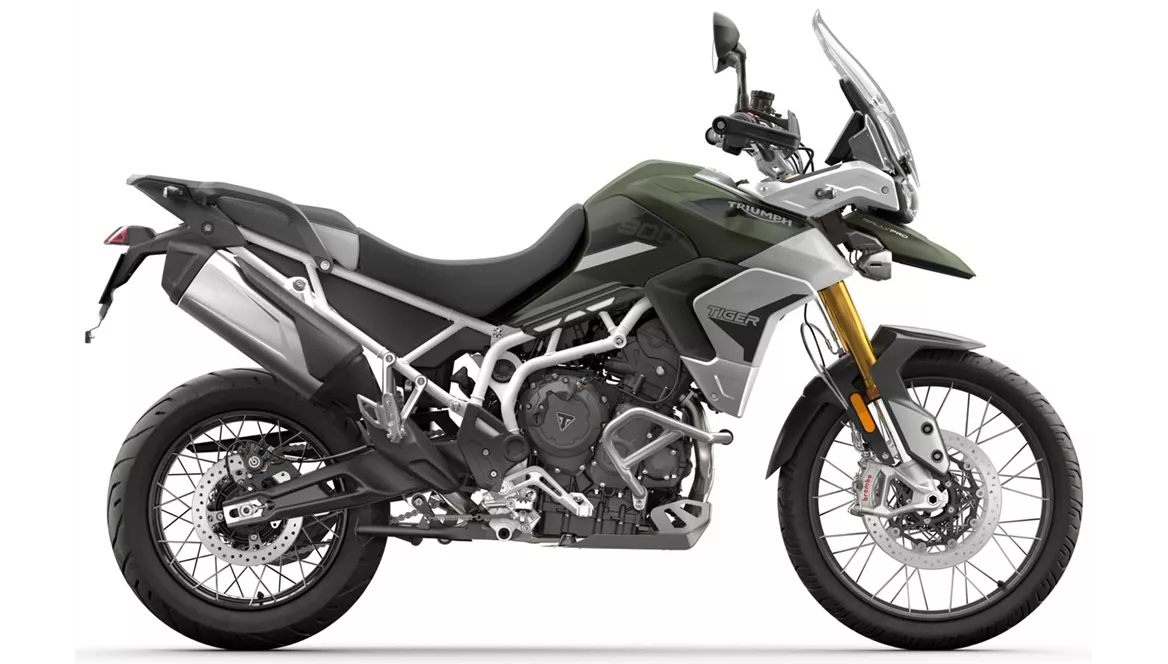
Triumph Tiger 900 Rally Pro 2020
Vue d’ensemble - Triumph Tiger 800 XC 2014 vs Triumph Tiger 900 Rally Pro 2020
The Triumph Tiger 800 XC 2014 and the Triumph Tiger 900 Rally Pro 2020 are both enduro motorcycles with similar engine types, bore, stroke, transmission, cylinders, and suspension brands. However, there are several notable differences between the two models.
In terms of engine power, the Triumph Tiger 800 XC 2014 has a slightly lower horsepower of 95 HP compared to the Triumph Tiger 900 Rally Pro 2020, which has 95.2 HP. The torque is also higher in the Tiger 900 Rally Pro at 87 Nm compared to 79 Nm in the Tiger 800 XC. This means that the Tiger 900 Rally Pro may have a slight advantage in terms of acceleration and power delivery.
Both motorcycles have a chain transmission and a steel tubular frame chassis. The front suspension on both models is an upside-down telescopic fork from Showa, providing good performance and stability. The rear suspension is also from Showa on both models.

Triumph Tiger 800 XC 2014
In terms of braking, the Triumph Tiger 800 XC 2014 has Nissin brakes on the front, while the Triumph Tiger 900 Rally Pro 2020 has Brembo brakes. Brembo brakes are generally considered to be of higher quality and provide better stopping power, so the Tiger 900 Rally Pro may have an advantage in this area.
Both motorcycles have a 21-inch front tire diameter and a 17-inch rear tire diameter, with a rear tire width of 150 mm. The wheelbase is slightly longer on the Tiger 900 Rally Pro at 1551 mm compared to 1545 mm on the Tiger 800 XC. The seat height is also slightly higher on the Tiger 900 Rally Pro at 850 mm compared to 845 mm on the Tiger 800 XC.
In terms of fuel tank capacity, the Tiger 900 Rally Pro has a slightly larger tank at 20 liters compared to 19 liters on the Tiger 800 XC. This means that the Tiger 900 Rally Pro may have a slightly longer range before needing to refuel.
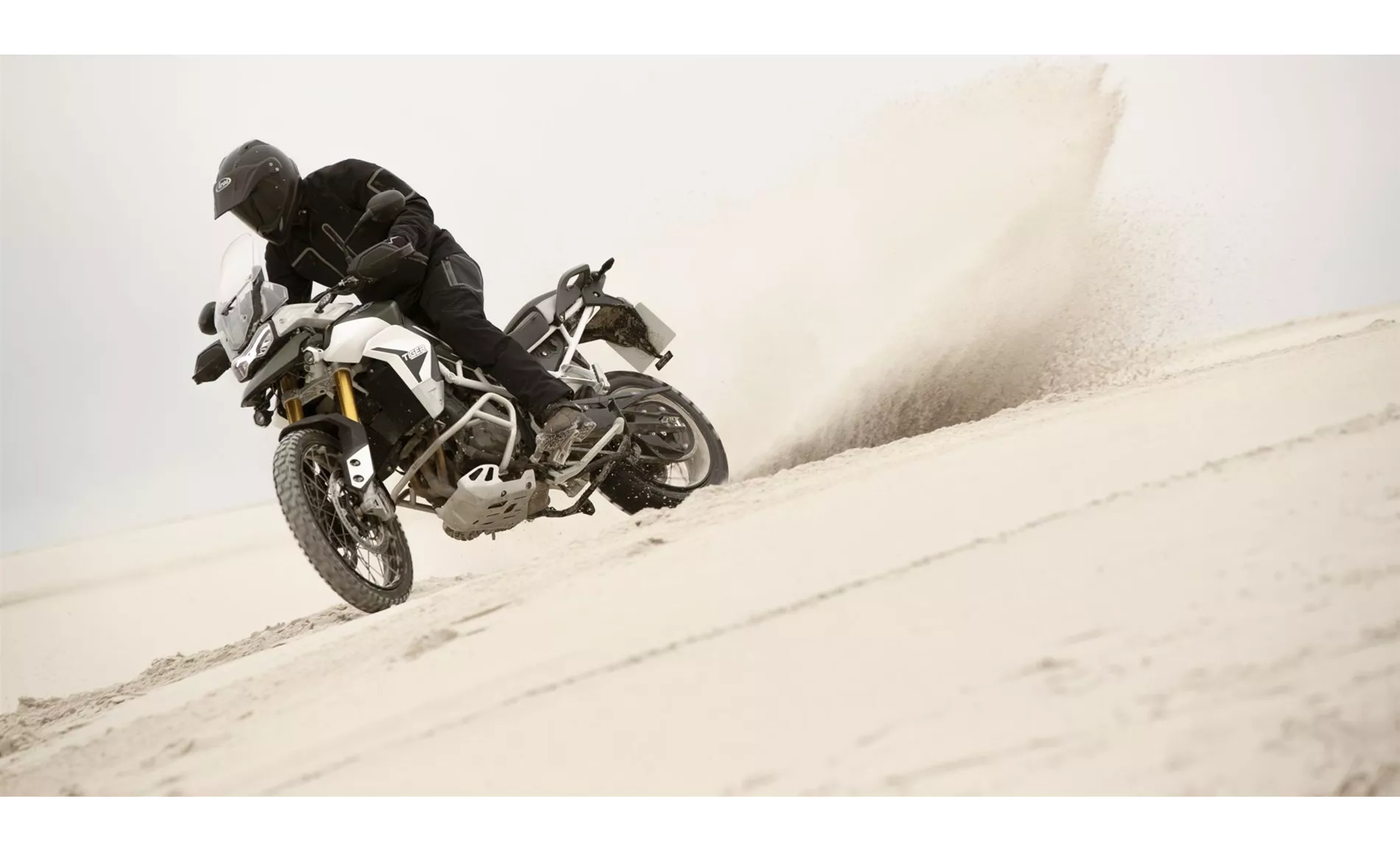
Triumph Tiger 900 Rally Pro 2020
In terms of strengths, the Tiger 800 XC 2014 is praised for its lively engine, sporty yet comfortable chassis, ease of handling, practical benefits, and great price/performance ratio. On the other hand, the Tiger 900 Rally Pro 2020 is praised for its characterful three-cylinder engine, improved off-road capability, comfortable suspension, standard quickshifter with blipper, generous standard equipment including heated seats, good ergonomics, and good wind and weather protection.
In terms of weaknesses, the Tiger 800 XC 2014 is criticized for its spartan dashboards, difficulty in operating the on-board computer from the end of the handlebar, and mediocre wind/weather protection. The Tiger 900 Rally Pro 2020 is criticized for its less robust handguards for off-road use and a flood of switches on the left handlebars.
Overall, the Triumph Tiger 900 Rally Pro 2020 offers several improvements over the Triumph Tiger 800 XC 2014, including a more powerful engine, improved off-road capability, and more standard features. However, the Tiger 800 XC still has its strengths, such as its sporty yet comfortable chassis and practical benefits. Ultimately, the choice between the two models will depend on the rider's preferences and priorities.
Caractéristiques techniques Triumph Tiger 800 XC 2014 par rapport à Triumph Tiger 900 Rally Pro 2020
Avantages et inconvénients en comparaison
Avantages et inconvénients en comparaison
Triumph Tiger 800 XC 2014

La Tiger 800 XC ne me plaît pas seulement sur la route pour mes trajets quotidiens vers le travail. C'est un véhicule très simple qui, grâce à son moteur puissant et pétillant, est non seulement très utile mais aussi très amusant. Sur la piste de course, je n'utilisais le véhicule que pour mes activités d'instructeur. Mais je n'ai pas pu m'en empêcher et j'ai dû prendre la piste dans le groupe le plus rapide. Le châssis de haute qualité et le moteur agile m'ont également procuré du plaisir et la Tiger 800 XC est pour moi LE talent universel par excellence.
Triumph Tiger 900 Rally Pro 2020
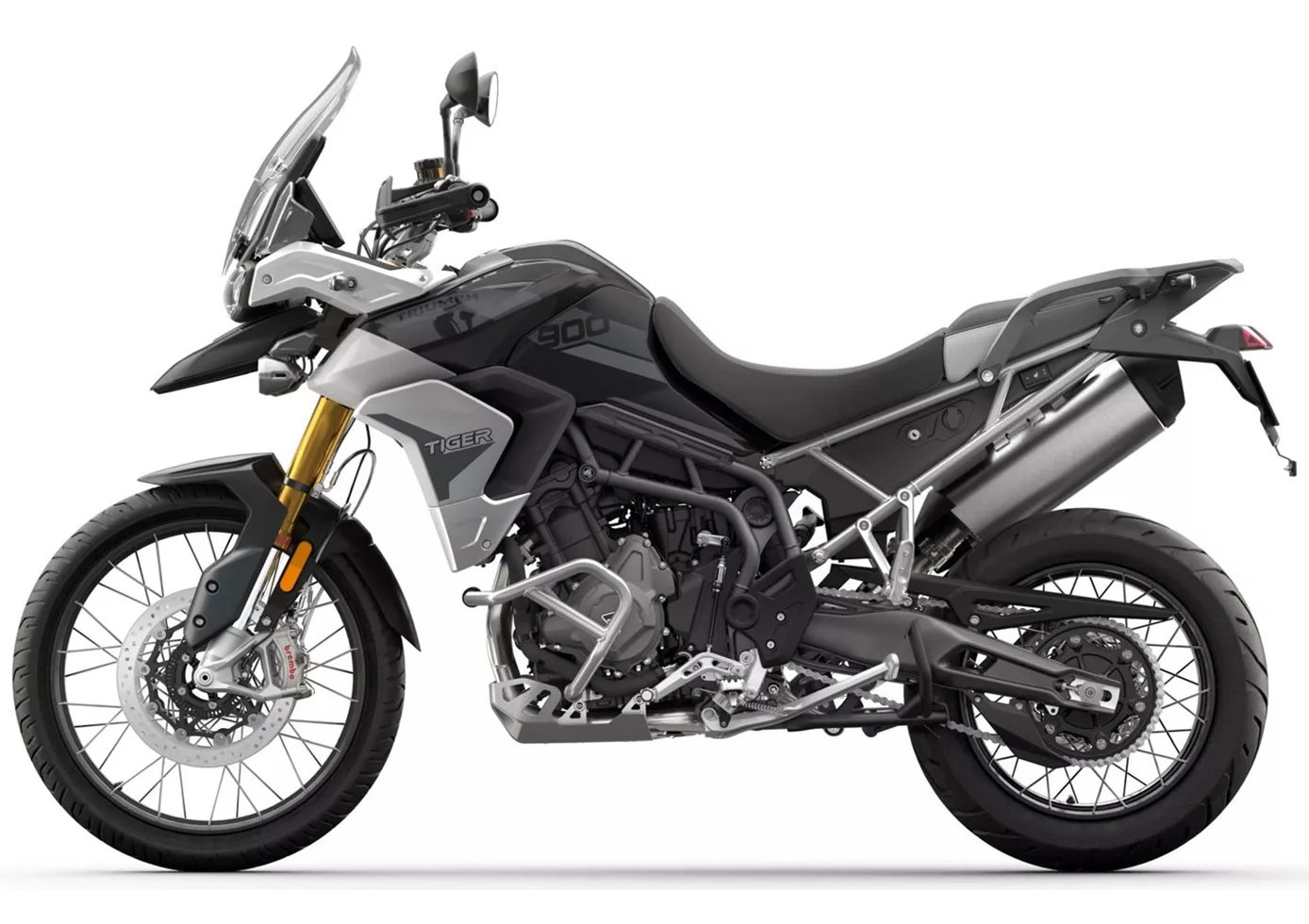
Il est impressionnant de voir à quel point cette moto parvient à faire le grand écart entre le tout-terrain et le hors-route, à faire exactement ce qu'une moto d'aventure devrait faire ou ce que l'on veut encore faire avec une moto d'aventure. Et cela avec un degré de maturité qui étonne pour un nouveau modèle et qui montre que chez Triumph, on a fait ses devoirs et que la Tiger 800, déjà sous-estimée, a été développée de manière judicieuse. Même si le sifflement typique du trois cylindres, moins prononcé, peut manquer à certains fans inconditionnels de la Tiger. A la question de savoir si la Tiger 900 Rally Pro est prête pour le voyage, je ne peux répondre que par un "quand est-ce que ça va repartir ?
Comparaison des prix Prix moyen du marché Triumph Tiger 800 XC vs Triumph Tiger 900 Rally Pro
There are a few key differences between a Triumph Tiger 800 XC 2014 and a Triumph Tiger 900 Rally Pro 2020. It takes less time to sell a Triumph Tiger 800 XC with 48 days compared to 91 days for a Triumph Tiger 900 Rally Pro. Since model year 2011 1000PS.de editors have written 16 reviews for the Triumph Tiger 800 XC and 22 reviews for the Triumph Tiger 900 Rally Pro since model year 2020. The first review for the Triumph Tiger 800 XC was published on 11/1/2010 and now has more than 8,200 views. This compares to more than 65,300 views for the first review on Triumph Tiger 900 Rally Pro published on 12/3/2019.

